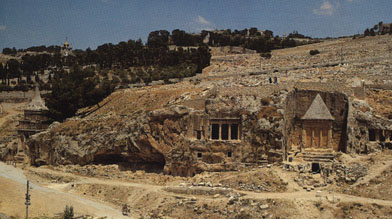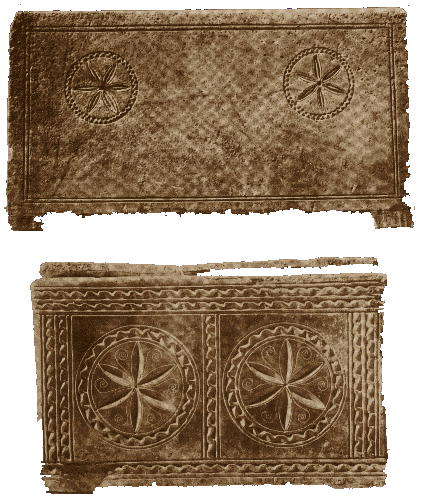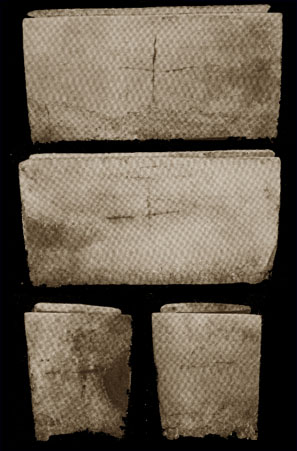|
|
|
|
"Jerusalem's Leading Christian Newspaper"

"New
Discoveries of the Bible, Jesus and the First Church"
Volume 9 --- Internet
Edition --- Issue 5
|
돌에
새겨진 증언들, 제자의 무덤이 그리스도의 승천을 증거하다.
"Testimonies in Stone"
Disciple's Tomb Testifies to Christ's
Ascension
|
|
죽어서 일세기 기독교인들은 예수 그리스도의 승천을 전한다.
In Death, First Century
Christians Herald the Ascension of Jesus Christ.
Donald L. Johnson
Review Staff Editor
이스라엘 예루살렘 - 예수에 관한 개인의 증언
청취를 즐기는가? 그리스도께서 누군가의 삶을 변화시킨 방법에 관하여
읽을 때 신명이 나는가?
JERUSALEM, Israel - Do you enjoy hearing personal testimonies about Jesus? Do
you get excited when you read of the way Christ has changed someone's life?
|
 |
예루살렘
예호사밧("하나님의 심판의 계곡") 계곡 남쪽가에 바사바(바르삽바스)
가족 카타콤이 이스라엘 고고학자들에 의해서 발견되었다. 솔로몬 왕
이후, 이 장소는 매장지로 인기가 있었다. 죽은 자의 부활, 사람의 최후심판,
그리고 메시아의 재림이 일어날 미래의 장소라고 믿었기 때문이었다.
초기 그리스도인들 역시 이들 인공 굴들에 매장되었다. 어떤 무덤들
앞에는 기념비들이 세워졌었다. 오른 쪽 삼각형처럼 생긴 것은 2,500년
이상 오래된 것이며, 솔로몬 왕의 성전에서 봉직했던 하이지르 집안의
제사장들을 위해 세워졌다. 왼쪽에서 멀리 떨어져 있는 것은 다윗의
아들 압살롬을 위해 세운 기념비이며, 예수께서 매일 성전에서 가르치기
위해서 감람산에서 옮겨 가실 때에 매일 그 곁으로 지나다니신 그 자리에
오늘날까지 그대로 서 있다.(눅 19:47)
At the southern
edge of the Valley of Ye-ho-sha-fat (the "Valley of the Judgement of God") in
Jerusalem, the Barsabbas family catacomb was discovered by Israeli
archaeologists. Since the days of King Solomon, this place was popular for
burial because it was believed to be the future scene of the resurrection of the
dead, the last judgement of man and the second coming of the Messiah. The early
Christians were also buried in many of these man-made caves, some with monuments
built in front of them. The triangular one on the right is more than 2,500 years
old and was built for the Priests of the House of Heizir, who served in the
Temple of King Solomon. On the far left, a monument to Absalom, son of King
David, stands today where it did when Jesus walked by it daily as He journeyed
from the Mount of Olives to teach in the Temple every day. (Luke
19:47)
|
만일
오늘부터 증거가 없다면, 그러나 오히려 2,000년전에 살았던 한 제자의
증거가 있다면 어떻겠는가? 만일 이 제자가 실제로 일세기 교회의 교인이었다면,
또 신약성경에 언급된 그리스도인들 중의 한 가족이라면 어떻겠는가?
만일 이 증거가 육체적으로 구세주와 더불어 함께 걸었고, 그분이 행하시는
기적을 보았고, 부활하신 주를 믿는 그의 믿음에 관해서 우리에게 개인적으로
말해 줄 수 있는 누군가에 의해서 만들어진 것이라면 어떻겠는가? 만일
예수 그리스도에 관한 이들 용감한 주장들이 신약성경의 기록보다 심지어
더 오래됐다면 어떻겠는가?
What if the testimony was not from today, but rather that of a Disciple who
lived 2,000 years ago? What if this Disciple was actually a member of the first
century Church, of a family of Christians mentioned in the New Testament? What
if this testimony was made by someone who physically walked with the Savior, saw
His miracles and can personally tell us of His faith in the risen Lord? What if
these bold claims about Jesus Christ were even older than the writing of the New
Testament itself?
어디에서 그와 같은 증거가 발견되었는가? 예루살렘에서 발견되었다. 일세기 어떤
예수의 제자들의 매장 굴들에서 발견된 유골함(작은 돌관들)의 양면에
쓰여진 글들에서 발견된다.그것들은 일찍이 발견된 기독교인의 믿음에
관한 가장 오래된 문서 기록이며, 현대인들을 위한 매우 현대적 의미를
가진 일세기에 살았던 사람들한테서 온 사적인 메시지들이다.
Where was such a testimony discovered? In Jerusalem, written on the sides of
ossuaries (small stone coffins) in the burial caves of some first century
Disciples of Jesus. They are the oldest written record of Christian faith ever
found, revealing personal messages from the past with a very modern meaning for
the present.
|
 일세기
유골함들 즉 돌관들은 유대인들과 기독교인들 모두에 의해서 매장을
위해서 사용되었다. 바사바 가족 카타콤에서 발견된 유골함들 가운데
몇 개의 유골함들에는 십자가 표식이 표시된데 반해, 다른 유골함들에는
표식이 없는 것이 확인되었다. 이들 십자가 표식이 없는 유골들은 같은
가족이면서도 교회에 다니지 아니한 사람들의 것이 틀림없다고 믿어진다.
두 개의 왼쪽 유골함에 새겨진 원속의 꽃모양은 다윗의 별에 대한 고대의
표현으로 일부 학자들은 생각한다. 일세기
유골함들 즉 돌관들은 유대인들과 기독교인들 모두에 의해서 매장을
위해서 사용되었다. 바사바 가족 카타콤에서 발견된 유골함들 가운데
몇 개의 유골함들에는 십자가 표식이 표시된데 반해, 다른 유골함들에는
표식이 없는 것이 확인되었다. 이들 십자가 표식이 없는 유골들은 같은
가족이면서도 교회에 다니지 아니한 사람들의 것이 틀림없다고 믿어진다.
두 개의 왼쪽 유골함에 새겨진 원속의 꽃모양은 다윗의 별에 대한 고대의
표현으로 일부 학자들은 생각한다.
First century ossuaries, stone coffins, were used for burial by both Jews
and the early Christians. In the Barsabbas family catacomb, some ossuaries were
marked with the sign of the cross while others were not, most likely indicating
members of the same family who did not join the Church. The two ossuaries to the
left include a circular, six-sided decoration which some scholars believe was an
ancient rendition of the Star of David.
|
 십자가의
표식은 "시몬 바사바(바르삽바스)"의 유골함 네면 모두에
표시되어있다. "시몬 바사바"는 초기 예루살렘 교회의 지도자들이었던
예수의 제자들의 한 가족의 멤버였다(행 1:21과 15:22). 십자가의
표식은 "시몬 바사바(바르삽바스)"의 유골함 네면 모두에
표시되어있다. "시몬 바사바"는 초기 예루살렘 교회의 지도자들이었던
예수의 제자들의 한 가족의 멤버였다(행 1:21과 15:22).
The sign of the cross marks all four sides of the coffin of "Simon
Barsabbas," a member of a family of Disciples of Jesus who were among the
leaders of the very first Church of Jerusalem. (Acts 1:21 &
15:22)
|
|
|
|
|
|
|
|
|
|
|
|